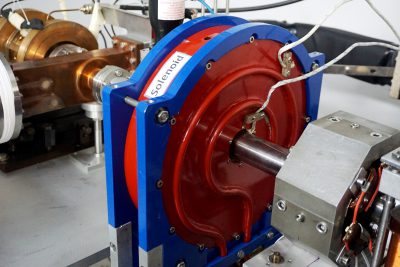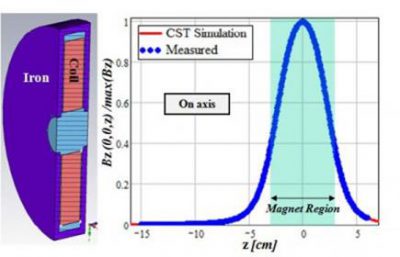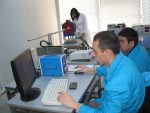Accelerator magnets and magnetic field measurements
In particle accelerator facilities charged particle beams are being controlled and manipulated by various types of magnets. Bending magnets, as well as corrector magnets are used for the beam guidance and steering. Beam focusing is realized by applying solenoid and several quadrupole magnets in doublet and triplet arrangements. Finally, light with specific properties will be produced through the periodic magnetic structure, the undulator.
Solenoid magnets are used for focusing low energy particle beams. Unlike with optical lenses, the image is rotated with respect to the object. Since the focal length increases with the square of the momentum, a solenoid lens is effective only for small momenta. Iron cover of the solenoid provides a return path for the solenoid field, thus enhancing and concentrating the field inside the magnet gap which is seen by the particle beam. In contrast to the solenoid, the quadrupole magnet focuses the beam only in one plane. If it focuses the beam in the horizontal plane, then the beam is being defocused in the vertical plane and vice versa.


| Solenoid magnet | The measured (blue dots) and simulated (red) longitudinal field of a solenoid magnet on axis (right). |
Experimental tasks include: 1) Mapping of the axial magnetic field along the central axis of the solenoid magnet using HALL probes; 2) Mapping of the integral magnetic field gradient of a uadrupole magnet in the transverse plane by a rotating coil. It will be discussed how magnets are used to set up a magnet optics lattice at accelerators in general and at AREAL in particular.
